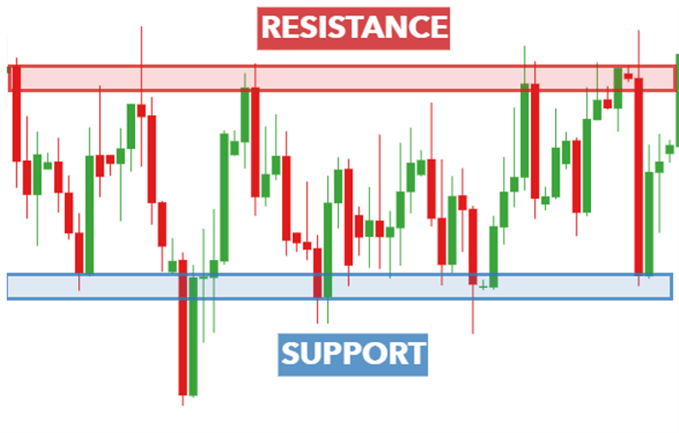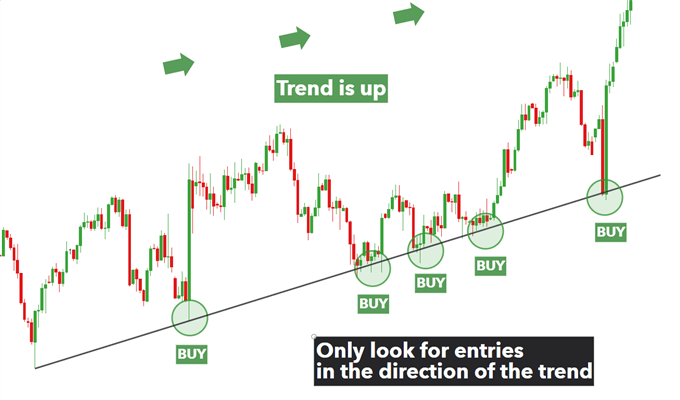What is Support & Resistance? A Guide for Beginners

One of the most commonly used trade terms is “support and resistance.”. The most successful support and resistance trading strategies are discussed in this article, as well as the definitions of support and resistance.
Table of Contents
ToggleWHAT IS SUPPORT AND RESISTANCE?
One of the most commonly used technical analysis methods in the financial markets is support and resistance. It’s an easy technique for quickly analyzing a map and determining three points of interest to a trader:
- The direction of the market
- Timing an entry in the market
- Establishing points to exit the market at either a profit of loss
If a trader can answer yes to the three questions above, they have a trading concept. Identifying levels of support and resistance on a chart will provide traders with answers to these questions.
Support occurs when falling prices stop, change direction, and begin to rise. Support is often viewed as a “floor” which is supporting, or holding up, prices.
Resistance is a price level where rising prices stop, change direction, and begin to fall. Resistance is sometimes regarded as a “ceiling” that prevents prices from increasing further.

When a downtrend is supposed to pause due to a concentration of demand, support occurs. Due to a concentration of supply, resistance occurs when an uptrend is supposed to stop temporarily.
TOP 4 SUPPORT AND RESISTANCE TRADING STRATEGIES
The following are four of the most effective help and resistance trading strategies:
1) Range trading
Range trading takes place in the space between the support and resistance as traders aim to buy at support and sell at resistance. Think of the area between support and resistance as being a room. Support is the floor and resistance the ceiling. Ranges tend to appear in sideways trading markets where there is no clear indication of a trend.
Levels of support and resistance are not always perfect lines. Sometimes price will bounce off a particular area, rather than a perfect straight line.
Traders need to identify a trading range and therefore, need to identify areas of support and resistance. The area of support and resistance can be identified and is shown in the chart below:

2) Breakout strategy (pullback)
It is common for price to breakout and begin trending after a time of directional uncertainty. Traders sometimes look for such breakouts below support or above resistance in order to profit from the momentum’s continued increase in one direction. This momentum has the potential to start a new trend if it is big enough.
However, in an attempt to avoid falling into the trap of trading the false breakout, top traders tend to wait for a pullback (towards support or resistance) before committing to a trade.
The chart below, for example, shows a high level of support before sellers moved the price below it. Many traders can become enthralled and rush to position a short trade too soon. Instead of conducting a short trade, traders can wait for the market reaction (buyers attempting to gain control) to break down.
Before searching for entry points in the scenario below, traders should wait for the market to begin moving down after the pullback.

3) Trendline strategy
The trendline can be used as support or resistance in the trendline strategy. Simply link two or more highs in a downtrend or two or more lows in an uptrend by drawing a line. Price will bounce off the trendline in a strong trend and continue to shift in the trend’s direction. As a result, for higher-probability trades, traders can only look for entries in the trend’s direction.

4) Using Moving averages as support and resistance
Moving averages can function as dynamic support and resistance in the market. The 20 and 50 period moving averages, which can be slightly modified to 21 and 55 period moving averages to use Fibonacci numbers, are common moving averages to use. Traders frequently use the 100 and 200 MAs, and it is eventually up to the trader to find an environment that they are comfortable with.
From the chart below, it is clear to see that the 55 MA initially tracks above the market as a line of resistance. The market then bottoms and reverses and the 55 MA then becomes the dynamic level of support. Traders can use these trendlines to make informed decisions about markets likely to continue trending and those susceptible to a breakout.

KEY TAKEAWAYS
- Support and resistance is a powerful trading pillar, and most strategies incorporate some form of support/resistance analysis.
- Support and resistance strategies may be dependent on price adhering to these levels (range bound strategy) or expecting the break of support and resistance (Breakout and pullback strategies).
- Price will not respect support and resistance forever. With this in mind, traders must use sound risk management to reduce losses if a breakout occurs.
